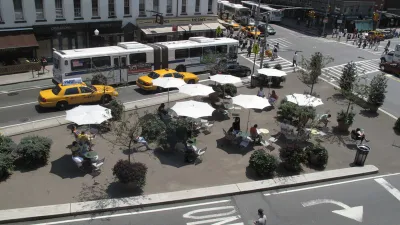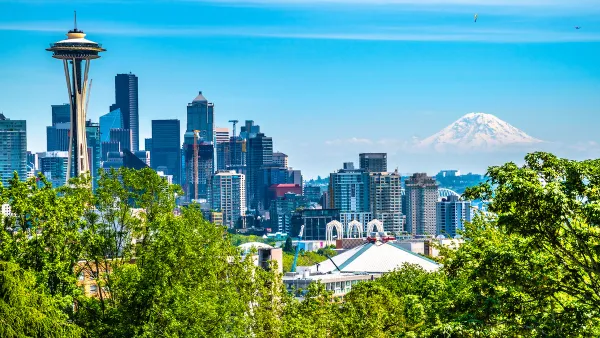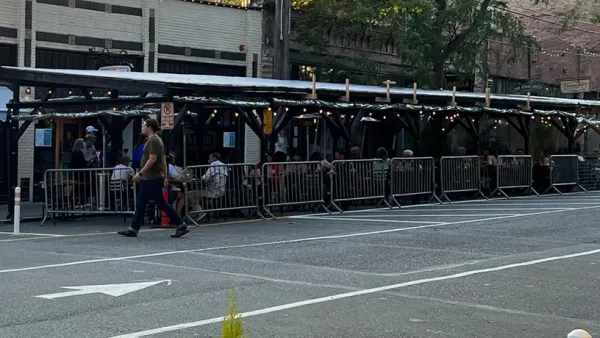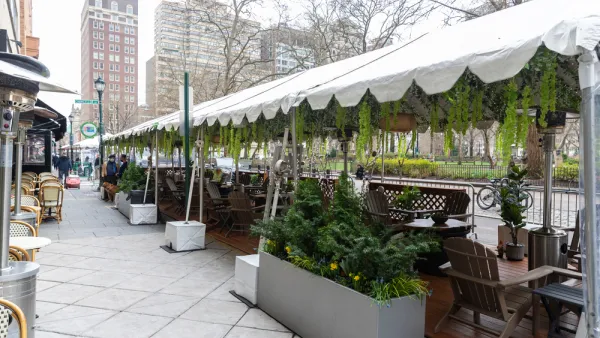Too often, street-side parklets become little more than semi-private patios for the businesses that sponsor them. Pavement parks, replacing dangerous intersections, may be a more worthwhile option.

Parklets are beloved of many urbanists, and Daniel Cohen argues they shouldn't be. Besides their minuscule size, parklets can be off-putting to pedestrians who confuse them for private spaces. "Perhaps it's fair that the parklet paid for by and in front of the ice cream shop is used primarily by their customers, but a semi-public use of public space is only semi-better than private car parking."
Cohen observes that parklets are generally located along commercial arterials, furthering limiting their appeal. "If given the choice to sit within inches of fast-moving cars and their emissions and the choice to sit anywhere else, I'm going to take the latter."
Seattle's First Hill "pavement park" replaces a dangerous intersection in a residential neighborhood. Cohen praises its accessibility, permanence, and significant imprint on the area. The pavement park fills a need for public space and helps calm traffic: factors that, Cohen argues, parklets have failed to address.
FULL STORY: Stop Building Mediocre Parklets, Start Building Pavement Parks

National Parks Layoffs Will Cause Communities to Lose Billions
Thousands of essential park workers were laid off this week, just before the busy spring break season.

Retro-silient?: America’s First “Eco-burb,” The Woodlands Turns 50
A master-planned community north of Houston offers lessons on green infrastructure and resilient design, but falls short of its founder’s lofty affordability and walkability goals.

Delivering for America Plan Will Downgrade Mail Service in at Least 49.5 Percent of Zip Codes
Republican and Democrat lawmakers criticize the plan for its disproportionate negative impact on rural communities.

Test News Post 1
This is a summary

Test News Headline 46
Test for the image on the front page.

Balancing Bombs and Butterflies: How the National Guard Protects a Rare Species
The National Guard at Fort Indiantown Gap uses GIS technology and land management strategies to balance military training with conservation efforts, ensuring the survival of the rare eastern regal fritillary butterfly.
Urban Design for Planners 1: Software Tools
This six-course series explores essential urban design concepts using open source software and equips planners with the tools they need to participate fully in the urban design process.
Planning for Universal Design
Learn the tools for implementing Universal Design in planning regulations.
EMC Planning Group, Inc.
Planetizen
Planetizen
Mpact (formerly Rail~Volution)
Great Falls Development Authority, Inc.
HUDs Office of Policy Development and Research
NYU Wagner Graduate School of Public Service





























